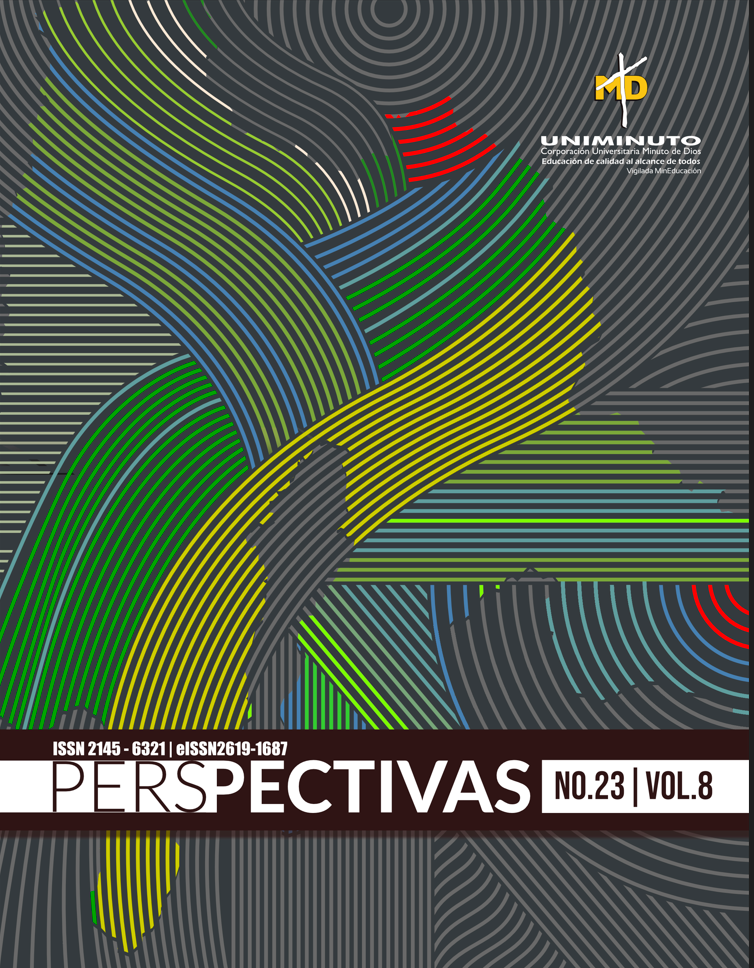Importancia de la autorregulación del aprendizaje en el diseño pedagógico en básica primaria
Barra lateral del artículo
Cómo citar
Detalles del artículo

Esta obra está bajo una licencia internacional Creative Commons Atribución 4.0.
Contenido principal del artículo
Resumen
El presente artículo se centra en un proyecto de investigación que analiza la relación entre el diseño pedagógico de los docentes, la implementación del aprendizaje autorregulado y el impacto en el desempeño académico de los estudiantes de educación básica; para ello se realizó un estudio cualitativo con alcance exploratorio y descriptivo, y tipo de enfoque fenomenológico y hermenéutico-interpretativo. Se llevó a cabo en catorce instituciones educativas del país, ubicadas en distintas regiones y en los contextos urbano y rural, donde se pudo indagar sobre la percepción y la importancia que tiene la planeación pedagógica para los docentes; cómo esta se desarrolla para fomentar hábitos de aprendizaje en los estudiantes y cómo estas acciones están alineadas con la autorregulación, siendo esta crucial para una adecuada motivación y desempeño académico en los estudiantes.
Los resultados de esta investigación permitieron destacar la importancia de las tecnologías digitales Web 2.0, las artes y el juego como recursos para la mediación en la enseñanza-aprendizaje. Los docentes entrevistados resaltaron que estos recursos son fundamentales para el aprendizaje vivencial, placentero y exitoso de los estudiantes, y que su integración en el diseño pedagógico es clave para cautivarlos y empoderarlos de su propio aprendizaje.
Se concluye que, comprender cómo los diseños pedagógicos pueden ser construidos para fomentar la autorregulación del aprendizaje en los estudiantes es crucial para mejorar el rendimiento académico de los mismos y promover su formación integral. Además, se destaca la importancia de que los docentes sean conscientes de la influencia que tienen sus diseños y sus prácticas pedagógicas en la formación de hábitos de aprendizaje autorregulado, y que promuevan la participación de las familias en este proceso; para ello es fundamental romper con las brechas sociales y educativas, para así aplicar metodologías innovadoras y participativas.
Referencias
Alonso, J. (1991). Motivación y aprendizaje en el aula. Santillana.
Alonso, J. (1997). Motivar para el aprendizaje. Teoría y estrategias. Edebé. https://www.terras.edu.ar/biblioteca/6/TA_Tapia_Unidad_4.pdf
Briones, W. y Meléndez, C. (2021). Clima familiar y rendimiento académico en adolescentes de Lima, Perú. Revista de Ciencias Humanísticas y Sociales (ReHuso), 6(2), 31-43. http://scielo.senescyt.gob.ec/pdf/rehuso/v6n2/2550-6587-rehuso-6-02-00033.pdf
Casanova, M. A. (2006). Diseño curricular e innovación educativa. Madrid, España: La Muralla. https://recyt.fecyt.es/index.php/BORDON/article/view/39603/22331
Correa, D. y Pérez, F. (2022). Los modelos pedagógicos: trayectos históricos. Debates por la historia, 10 (2), 125-154. https://doi.org/10.54167/debates-por-la-historia.v10i2.860
De la Maza, L. (2005). Fundamentos de la filosofía hermenéutica: Heidegger y Gadamer. Teología y Vida, 46, 122-138. https://www.scielo.cl/scielo.php?script=sci_arttext&pid=S0049-34492005000100006
Dieser, M. (2019). Estrategias de autorregulación del aprendizaje y rendimiento académico en escenarios educativos mediados por tecnologías de la información y la comunicación. [Tesis de especialización, Universidad Nacional de la Plata]. http://sedici.unlp.edu.ar/bitstream/handle/10915/85104/Documento_completo.pdf-PDFA.pdf?isAllowed=y&sequence=1
Flavell, J. H. (1976). Metacognitive aspects of problem solving. En L. B. Resnick (Ed.), The nature of intelligence (pp. 231-236). Erlbaum. https://scirp.org/reference/referencespapers.aspx?referenceid=883107
Ovelar, R., Benito, M. y Romo, J. (2009). Nativos digitales y aprendizaje. Una aproximación a la evolución de este concepto. Revista Ícono, 7(1), 31-53. https://www.redalyc.org/pdf/5525/552556590003.pdf
Paris, S. G. y Winograd, P. (1990). How metacognition and promote academic learning and instruction. En: B. E, Jones y L. Idol (eds.). Dimensions of thinking and cognitive instruction (pp. 15-51). Erlbaum.
Pintrich, P. R. (2000). The Role of Goal Orientation in Self-Regulated Learning. En M. Boekaerts, P. R. Pintrich y M. Zeidner (Eds.), Handbook of Self-Regulation: Theory, Research, and Applications (pp. 451-502). Academic Press. https://www.scirp.org/(S(i43dyn45teexjx455qlt3d2q))/reference/ReferencesPapers.aspx?ReferenceID=2030758
Pintrich, P. R. y De Groot, E. V. (1990). Motivational and self-regulated learning components of classroom academic performance. Journal of Educational Psychology, 82(1), 33-40. http://rhartshorne.com/fall-2012/eme6507-rh/cdisturco/eme6507-eportfolio/documents/pintrich%20and%20degroodt%201990.pdf
Posada, R. (2014). La lúdica como estrategia didáctica. [Tesis de maestría, Universidad Nacional de Colombia]. https://repositorio.unal.edu.co/bitstream/handle/unal/47668/04868267.2014.pdf?sequence=1&isAllowed=y
Toruño, C. (2020). Aportes de Vigotsky y la pedagogía crítica para la transformación del diseño curricular en el siglo XXI. Revista Innovaciones Educativas, 22(33), 186-195. https://www.scielo.sa.cr/pdf/rie/v22n33/2215-4132-rie-22-33-186.pdf
Zimmerman, B. (2000). Attaining self-regulation: A social cognitive perspective. En M. Boekaerts, P. R. Pintrich y M. Zeidner. Handbook of self-regulation (pp. 13-39). Academic Press. https://doi.org/10.1016/B978-012109890-2/50031-7
Zimmerman, B. J. (1990). Self-regulated learning and academic achievement: An overview. Educational Psychologist, 25(1), 3-17. https://doi.org/10.1207/s15326985ep2501_2

